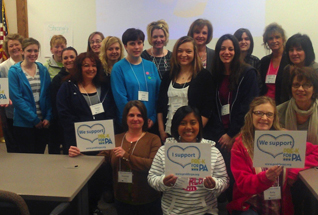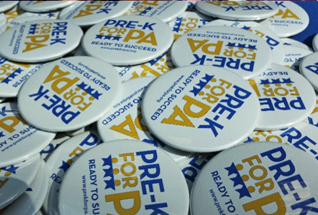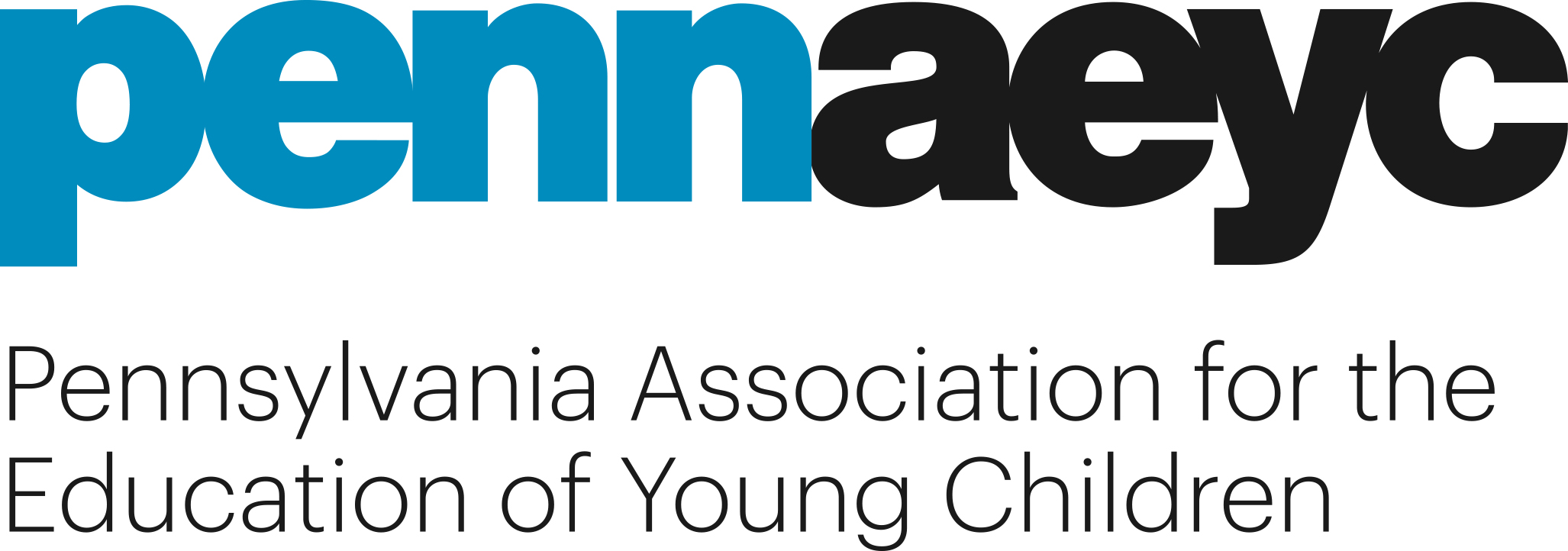Our commonwealth needs to make further investments and improve policies for the children and families served in the early care and education system. Read below for updates and information about Pennsylvania-focused policy and advocacy.



State Budget for Fiscal Year 2025-26
The final FY 2025-2026 state budget provided the following investments in early childhood care and education:
Child Care: The budget provides a new line item under the Department of Human Services’ budget for Child Care Recruitment and Retention. The new line item includes a $25 million recurring investment for child care teachers directly responsible for the care of children in licensed programs that have a child care subsidy agreement. The Child Care Services and Child care Assistance line items were level-funded.
Pre-K: The budget provides an increase of $9.5 million for Pre-K Counts. The budget agreement requires these funds to be used to increase the rate per child. Disappointingly, the Head Start Supplemental Assistance Program was level-funded.
Early Intervention: Infant and Toddler Early Intervention received an increase of $13.2 million and $10 million of these funds are allocated for a rate increase for providers. Early Intervention for children ages three to school age received an increase of $28.5 million.
Read the Early Learning PA Coalition press release
Budget-Related Legislation
Each year, there are bills which pass along with the budget. Some provide guidance regarding how line items are implemented and others move agreed-upon policy goals forward. The following initiatives passed into law related to early care and education:
- The Fiscal Code includes language to provide parameters for the new Child Care Recruitment and Retention program.
- The Fiscal Code also authorizes the Treasurer to waive interest charges on Treasury Bridge Loans issued during the budget impasse.
- The School Code was amended to change the teacher certification grade spans. While current certificates will be honored, as of July 1, 2028 early childhood will be included in a broader “primary” certificate including pre-k to grade 6 (ages 3-11). However, “primary” educator preparation programs must include a minimum of 30 credit hours of coursework focused on early childhood. They must allow for fieldwork experience focused on early childhood, if desired.
- The Human Services Code codifies prior year to year initiatives to increase the exit income for child care subsidy. It also aligns copayments with federal law and state policy.
New resource available on Infant/Toddler Early Intervention
We are excited to announce a new resource for early care and education providers and the families you serve about the Infant and Toddler Early Intervention program, which provides services to children who have or are at risk of developmental delays.
This one-page handout includes valuable information on
- Eligibility criteria and the enrollment process
- Available services and how they can support child development
- Contact information for referrals and questions
Download the file in English here Infant and Toddler Early Intervention Handout and Spanish here Spanish Infant and Toddler Early Intervention Handout
New Updated Report: Solving the Child Care Teacher Shortage Through State Recruitment and Retention Investments
Issued by PennAEYC and Start Strong PA the Solving the Child Care Teacher Shortage Through State Recruitment and Retention Investments (Updated Report 2025) report describes how other states are tackling the child care teacher shortage head-on by funding initiatives that help providers better recruit and retain their staff. These 18 states are directly investing in recruitment, retention and other wage impacting strategies to ensure that the supply of child care teachers can meet the demand and keep classrooms open for working families. Some of the states that have made additional investments in recruitment and retention programs also have a child care subsidy reimbursement rate at or above the 75th percentile. This 2025 update includes the states that have documented and shared their outcomes.
Building a Financially-Stable, High-
Read the full report here Improving Subsidized Child Care Rate Setting - 2-2023 Web
Improving Subsidized Child Care Rate Setting Presentation February 2023
Presentation Recording; Passcode: Z%ngF2T?
Cost Gap Charts ELRC Regions 1-3 May 2025
Cost Gap Charts ELRC Regions 4-7 May 2025
Cost Gap Charts ELRC Regions 8-11 May 2025
Cost Gap Charts ELRC Regions 12-15 May 2025
Cost Gap Charts ELRC Regions 16 -19 May 2025
Cost Estimation Modeling Guide
PennAEYC, in collaboration with Start Strong PA, released a cost estimation modeling guide to provide the steps that must be taken to conduct cost estimation modeling and develop an alternative payment methodology to implement a cost based approach to rate setting in a manner which can be approved by the federal government. The Administration must opt to set provider payment rates based on an alternative methodology using a cost estimation model. There are two primary inputs to developing a cost estimation model, expense and revenue data from child care providers and quality cost drivers. The cost estimation model process will result in a tool that Pennsylvania can use to understand the impact of child care program characteristics and policies on the cost of care. When a state knows the true cost of care, these data can be used both to reimburse programs for the cost of operations as well as to gain understanding of what level of additional funding might be necessary to adequately incentivize care for underserved populations. Upon completion of the cost estimation model, Pennsylvania would develop a new payment methodology based on the information collected, along with a plan to fund the gap between current subsidy rates and the cost of providing high-quality child care.
Recommendations for Infant and Toddler Contracts in Pennsylvania: A Model to Strengthen and Stabilize the Child Care System
PennAEYC, Children First, Trying Together and Pennsylvania Partnerships for Children released recommendations for Pennsylvania related to infant and toddler contracted slots to expand and improve the program. Pennsylvania is well poised to expand contracts for infants and toddlers based on the Infant and Contracted Slots Pilot and can serve as a model for strengthening and stabilizing the child care system. These recommendations highlight the policy goals for the expansion of contract-based slots for infants and toddlers and offers well-researched financing and monitoring recommendations to ensure accountability for the system and use of public dollars. Lastly, the recommendations include ways to strengthen equity in a contracts-based model to ensure funding reaches all Early Learning Resource Center regions.
Read the full report here Recommendations for Infant and Toddler Contracts in Pennsylvania: A Model to Strengthen and Stabilize the Child Care System
Statewide Advocacy Agenda to Improve Part C Early Intervention Services for Pennsylvania
PennAEYC and Pennsylvania Partnerships for Children released a comprehensive report, Statewide Advocacy Agenda to Improve Part C Early Intervention Services for Pennsylvania, which reviewed the data and current practices in Pennsylvania’s system. There are five core recommendations:
- Serving all children who can benefit from Part C EI through outreach, referral, enrollment
- Ensuring Part C EI services offer the quality needed to make a difference
- Achieving equitable access in Part C EI
- Addressing mental health needs of infants and toddlers in Part C EI
- Partnering with Medicaid to improve Part C EI
Read the full report here Statewide Advocacy Agenda to Improve Part C Early Intervention Services for Pennsylvania - JUNE 2022 FINAL ONLINE
